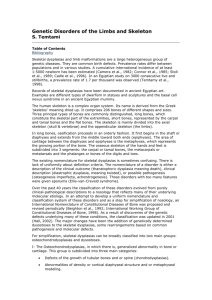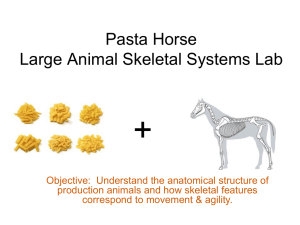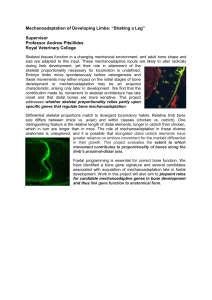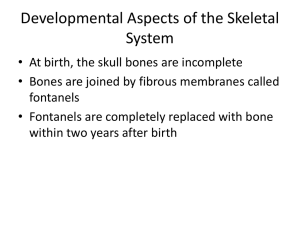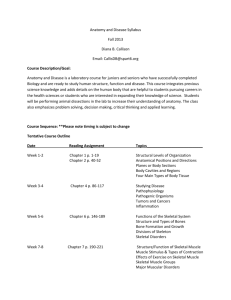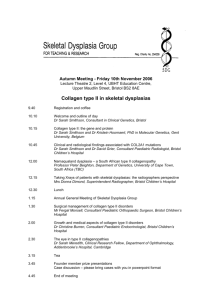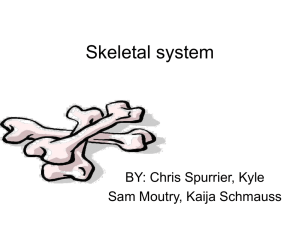POSTER ABSTRACT IRIA 2014
advertisement
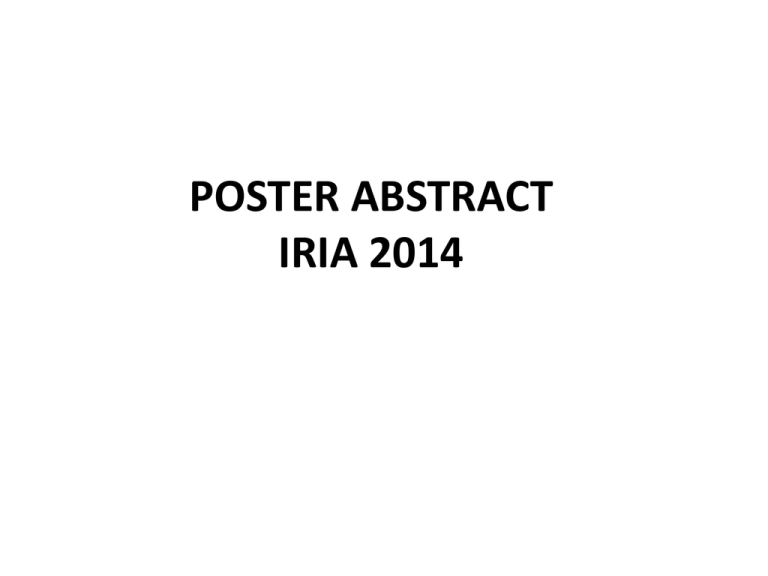
POSTER ABSTRACT IRIA 2014 CASE SERIES OF SKELETAL DYSPLASIAS DR.M.MANI BHARATHI, II Year POSTGRADUATE, M.D.RADIODAIAGNOSIS, INTRODUCTION • Skeletal dysplasias are disorders of development of bone caused by widespread disturbance of bone growth, beginning during the early stages of fetal development and evolving throughout life. There are more than 400 disorders and are difficult to diagnose correctly. History, clinical examination, radiological and biochemical investigations all aid in the correct diagnosis. Complete skeletal survey should be done and observed for relative length of the long bones, size, shape, proportions of each bone and mineralization pattern of the metaphysis, physis, and epiphysis in light of the patient's age and overall size METHODS AND MATERIALS • 13 patients were referred to Department of Radio-diagnosis,SRM MC &RI with clinical features pertaining to skeletal abnormalities from the period of NOV 2013 - OCT 2014. All the cases were evaluated and followed up. RESULTS • Various Skeletal dysplasias were found - 4 cases of Pyknodysostosis, 1 case of Morquio`s syndrome, 1 case of Hurler`s syndrome, 1case of Achondroplasia, 1case of Spondylo-metaepiphyseal dysplasia, 1 case of Cleidocranial Dysostosis, 1 case of Pachydermoperiostosis, 1 case of Osteopetrosis, 1 case of Apert`s Syndrome and 1 case of Osteogenesis imperfecta. Highest incidence was found in 11- 20 years age group with male preponderance ( 2:1). CONCLUSION • Although skeletal dysplasias occur infrequently, the recognition of these disorders is important both for the patient and for genetic counseling. The radiologist plays a major role in making an accurate diagnosis; however, representatives of other disciplines, including clinicians, molecular biologists, and pathologists, can also provide important diagnostic information.

